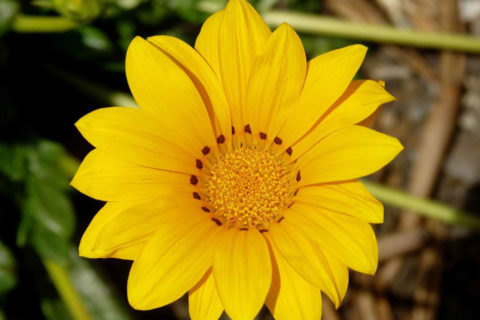Winter Is Coming – Is Your Desert Garden Ready?
Although it might surprise many Phoenix, Arizona visitors when they hear locals speaking of getting their desert garden ready for winter but it is true winter does come to the desert. Great extremes occur between day and night temperatures throughout Phoenix, Arizona. During winter months, daytime temperatures may average 70°F with night temperatures often dipping to below freezing and if there’s precipitation it’ll come down as snow – it’s quite the site to see snow on a cactus.
Low temperatures can harm sensitive plants but frost can certainly damage some trees and plants if you don’t’ take precautions against the chilly nighttime temperatures.
Ten Steps To Protecting Desert Garden In The Winter
Follow these 10 easy steps in protecting your desert garden through the winter months for a thriving growth in the springtime.
1. Not all desert plants are frost-sensitive but knowing which ones are will save you money and work in replacing them. A few the most common frost-sensitive plants we see in homeowners gardens in Phoenix and surrounding areas are:
• Bougainvillea,
• Hibiscus,
• Natal Plum,
• Cape Honeysuckle,
• the beautiful Red Bird of Paradise
• the delicious citrus plants such as Oranges, Lemon, Grapefruit,
• and of course, the Non-native cactus plants.
If your plants are just freshly planted or currently actively growing they most likely need frost-protection.
2. Places that retain heat in the winter are the most favorable to planting frost-sensitive plants. The south or west sides of your home or garden, near the pool, rocks or concrete retaining walls that are capable of retaining the daytime heat are a great source for more warmth and protection. Planting in shaded areas will definitely be prone to frost damage and will require a covering.
3. The temperature mentioned on the Phoenix Weather Network or on the Phoenix news network may well be different than what reads on your outdoor thermometer. Greater Phoenix covers a large area and your location may be at a higher elevation, more surrounding vegetation, more concrete, etc. and may vary in actual temperature by as much as five to ten degrees. Getting a thermometer and comparing your actual temperature to the weather forecast may be a good way to be prepared.
4. Of course, the best way to protect your plants and trees from frost damage is to cover them with light porous sheets, light blankets or burlap. Many can be purchased from your local hardware stores and thrift stores.
5. Refrain from using plastic to cover your plants, shrubs or cactus. The plastic cups or tarps create a vacuum and trap the moisture around the plant and damage the plant. A light sheet that does not touch the branches or leaves is ideal but next to impossible to create. So just make sure the sheet, burlap or frost protection covering is light enough that when it soaks up the moisture it does not become too heavy and damage the plants but still is able to protect from frost damage. Do not use heavy blankets.
6. Generally, the ideal way to cover a plant or tree is to make sure your covering drapes over enough that touches the ground. This will help to retain the warmth under the cloth.
7. Young citrus trees that have not yet reached maturity need frost protection. Particularly susceptible to frost are lime and lemon trees. It may be difficult to completely cover a tall lime or lemon tree but simply do your best and remember, most citrus trees will most likely come back from frost exposure the following spring, unless, it was exposed to a severe frost.
8. Even during the winter months the plants still require watering. Watering in the morning is ideal as wet soil absorbs the sun’s heat during the day and the leaves will be dry, as the evening gets colder. Do not overwater your plants in the winter months.
9. Some of the coldest temperatures are just after sunrise so be careful not to remove the frost covers too early. Late morning is preferable
10. Should frost reach your plants don’t remove the damaged parts until the spring. Even though the branches and leaves may be dead they provide protection to the parts of the plant that are still alive.
These are just some tips for Phoenix’s winter climate, and just suggestions that Prestige Landscaping uses to help their clients protect their landscaping investments and add value and beauty to outdoor spaces. With years of experience in Phoenix area, Prestige has seen some pretty wintery months in the desert and the sad results of frozen or frostbitten plants, shrubs, and trees.
Feel free to Contact Us today to keep your outdoor space looking beautiful all year round.

